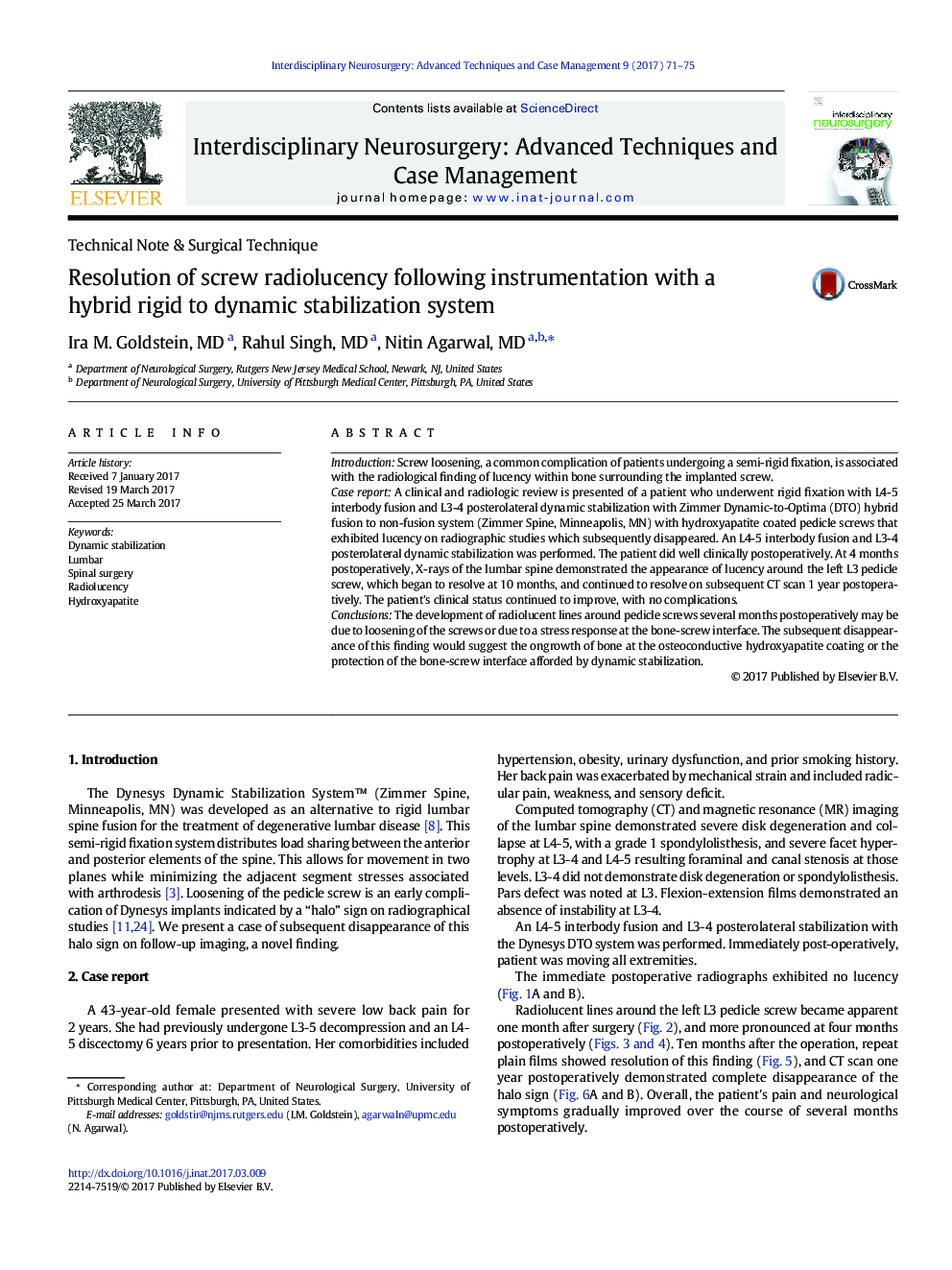| کد مقاله | کد نشریه | سال انتشار | مقاله انگلیسی | نسخه تمام متن |
|---|---|---|---|---|
| 5629446 | 1580207 | 2017 | 5 صفحه PDF | دانلود رایگان |
- Screw loosening is a common complication of patients undergoing a semi-rigid fixation.
- Development of radiolucent lines around pedicle screws may represent screw loosening or a stress response at the bone-screw interface.
- The loss of lucency may represent bone growth onto the HA coating or protection of the bone-screw interface from dynamic stabilization.
IntroductionScrew loosening, a common complication of patients undergoing a semi-rigid fixation, is associated with the radiological finding of lucency within bone surrounding the implanted screw.Case reportA clinical and radiologic review is presented of a patient who underwent rigid fixation with L4-5 interbody fusion and L3-4 posterolateral dynamic stabilization with Zimmer Dynamic-to-Optima (DTO) hybrid fusion to non-fusion system (Zimmer Spine, Minneapolis, MN) with hydroxyapatite coated pedicle screws that exhibited lucency on radiographic studies which subsequently disappeared. An L4-5 interbody fusion and L3-4 posterolateral dynamic stabilization was performed. The patient did well clinically postoperatively. At 4Â months postoperatively, X-rays of the lumbar spine demonstrated the appearance of lucency around the left L3 pedicle screw, which began to resolve at 10Â months, and continued to resolve on subsequent CT scan 1Â year postoperatively. The patient's clinical status continued to improve, with no complications.ConclusionsThe development of radiolucent lines around pedicle screws several months postoperatively may be due to loosening of the screws or due to a stress response at the bone-screw interface. The subsequent disappearance of this finding would suggest the ongrowth of bone at the osteoconductive hydroxyapatite coating or the protection of the bone-screw interface afforded by dynamic stabilization.
Journal: Interdisciplinary Neurosurgery - Volume 9, September 2017, Pages 71-75
